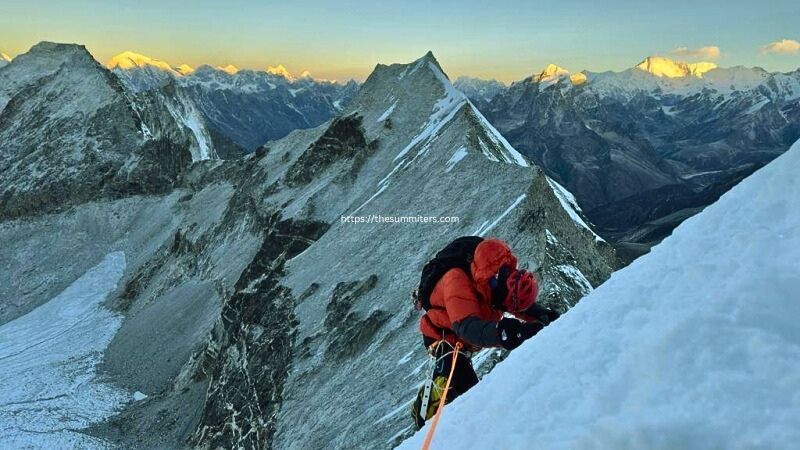A daring Alpinists attempt took place in the formidable terrain of Malangphulang Peak within the Everest region. Led by seasoned guides Riten Jangbu (Tashi) Sherpa and Prakash Sherpa from Alpinist Climber Expeditions Pvt Ltd, this alpine-style climb aimed to conquer the untraveled Northwest Ridge, presenting an ambitious challenge to four mountaineers—Jay Mathers and Luigi Santini among them—who sought to leave their mark on this untouched terrain.

Alpinists Attempt: Weathering the Trials Above 6000m
Their journey, embarked upon in the first week of November, faced relentless weather challenges. Despite meticulous planning and preparation, the team encountered formidable obstacles, enduring treacherous conditions marked by ice and soft snow upon surpassing the 6000-meter mark. The decision to halt their summit push amidst the adversity was a testament to their prudent judgment and commitment to safety.
A Treacherous Path: Unforeseen Obstacles and Changing Landscapes
The team’s expedition began from Ama Dablam Basecamp lodge, progressing through varied terrains—from well-traveled trails to open tundra, yak trails, and finally, the unexpected challenges of lateral moraine and talus slopes. Their camp setup at 5100m revealed a striking disparity from their pre-trip research, indicating a significant shift in glacier coverage due to the undeniable impacts of climate change.

Reflecting on their journey, Jay Mathers highlighted the stark changes in the landscape, particularly the glacier’s alarming recession over recent decades. The initial climb to Camp 1 involved negotiating mostly manageable 5th class terrain, with surprises including a section rated at YDS 5.9 (French 5c), challenging their expectations.
Summit Bid and Setbacks: Navigating Unstable Terrain
The critical juncture arrived as the team commenced their summit bid from Camp 1 at 2200. Scaling the ridge exposed them to a mix of unstable ground—loose, unpredictable terrain transitioned into snow-covered slopes, testing their skills and determination. The ascent grew steeper, with sections reaching 60-70 degree inclines, where the team faced the daunting blend of neve, ice, and unconsolidated snow.
As they approached the summit, the challenging conditions worsened, prompting a strategic decision to abort their ascent at just over 6000m. Disheartened but undeterred, the team executed a careful descent, navigating tension belays, rappels, and cautious down climbing along the ridge.
Journey’s End: Reflecting on a Grueling Expedition
Their return journey from the high point to the high camp involved a laborious 20-hour trek, employing rappels and strategic anchors. Despite falling short of their ultimate goal, the team’s valiant efforts and resilience in the face of unpredictable challenges stand as a testament to the indomitable spirit of alpinism in the Everest region.

This expedition serves as a stark reminder of the changing landscapes in the world of mountaineering, where each climb unfolds unforeseen challenges and unveils the relentless impact of climate change on these majestic peaks.
Read More: Wojciech Kurtyka | Alpinist and Advocate of Alpine-Style Climbing